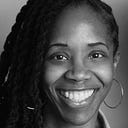Staying Grounded and Designing for the Future
January 2021 has already reminded us of how threatening Radical Inclusion is to an exclusive power structure. On November 3, 2020, the majority of citizens in the United States voted to elect Kamala Harris to the Office of Vice President and Joe Biden to the Office of President; on January 20, they took office. On January 5, 2021, the citizens of Georgia voted to send Rev. Raphael Warnock and Jon Ossoff to the Georgia Senate. All three are historic firsts: Harris will be the first woman of color to hold the office of Vice President; Warnock will be the first Black man to ever represent Georgia in the Senate; and Jon Ossoff, the son of Jewish immigrants, will be the first Jewish man to represent a Southern state since the 1880s.
The voices and the experiences of the most marginalized and excluded are going to be heard in the People’s House. This is exciting. We should not let anything steal or distract us from the courage, vision, time, and money it took to make this happen.
Because history tells the future in America, backlash — which we have already begun to see — is to be expected, along with a continuation of the protracted struggle of what it really means to design for equity. When four and a half million newly freed Black Americans gained access to the ballot after Emancipation and voted for the first time, the exclusive power structure in our country was threatened and transformed. White supremacists organized to deny access to the polls and terrorize Black and white Americans who worked for political visibility in our democracy; the next two generations inherited this struggle. After the Supreme Court ruled that segregation was unconstitutional, white supremacists again refused to comply, threatening the very ideals of our country and denying children the opportunity to form relationships across difference — relationships that could repair, restore, and heal the pains and traumas of the past. This resistance erased the chance and choice the children of that era could have had to reimagine new identities for themselves.
Today, as our coalition grows and becomes more diverse, we need new roadmaps and tools that are grounded in the wisdom of the past.
We need tools that are oriented toward a radically inclusive future, and that keep us focused, informed, action-oriented, and courageous during this time. The wisdom of our ancestors that could help navigate this messiness is often silenced by the trauma, pain, and shame of experiencing much of this history firsthand.
There is a pattern here that we cannot ignore. We should not be surprised at what we are seeing. Supremacy and democracy are incompatible. When we push for democracy, we should expect resistance from those who subscribe to supremacy. But what do we do now with this inherited knowledge?
We take deep breaths and continue the work of perfecting our democracy.
In the days ahead, we honor the legacy of patriots like Fannie Lou Hamer, Martin Luther King, Jr., and Stacey Abrams when we continue to build and design an inclusive society where all bodies are seen, heard, and treated with dignity and respect in both our private interactions and our public responses. We design a circle big enough that includes all bodies.
To the end, we are excited to share one such design tool to help us continue to Speak the Future and Design the Future in our thoughts, designs, and actions.
Use this tool to:
1. Assess the mission and vision of your school, organization, classroom, curriculum, and lessons for its allegiance to Radical Inclusion and the creation of a multicultural democracy.
- In what ways does the vision and mission of our school or organization acknowledge all of the stories of people on this land?
- If we were designed to scale Radical Inclusion in our communities and schools, and that was our sole purpose for existing, how would the mission and vision change? What new knowledge and skills are required?
2. Reflect on and assess the questions you are asking yourself as a designer.
- What are the assumptions hidden in my current design questions? Do they assume that the racial hierarchies will remain unchallenged?
- In what ways can my design questions be re-written to create new relationships and new social knowledge between the most marginalized and the most powerful?
3. Assess the composition of your design team and if you are in relationship with others who can help you see your hidden assumptions.
- Am I in relationship with people who will tell me the truth about myself, even when it’s hard?
- Am I in relationship with myself long enough to make visible my own contradictions and give myself time to reconcile them?
4. Assess the relationship between your design questions, assumptions, the mission and vision and your actions.
- Is my vision for Radical Inclusion only alive in two dimensions — only in thoughts and words?
- Where do I feel that I have integrated my vision, questions, and assumptions into my private and public actions?
